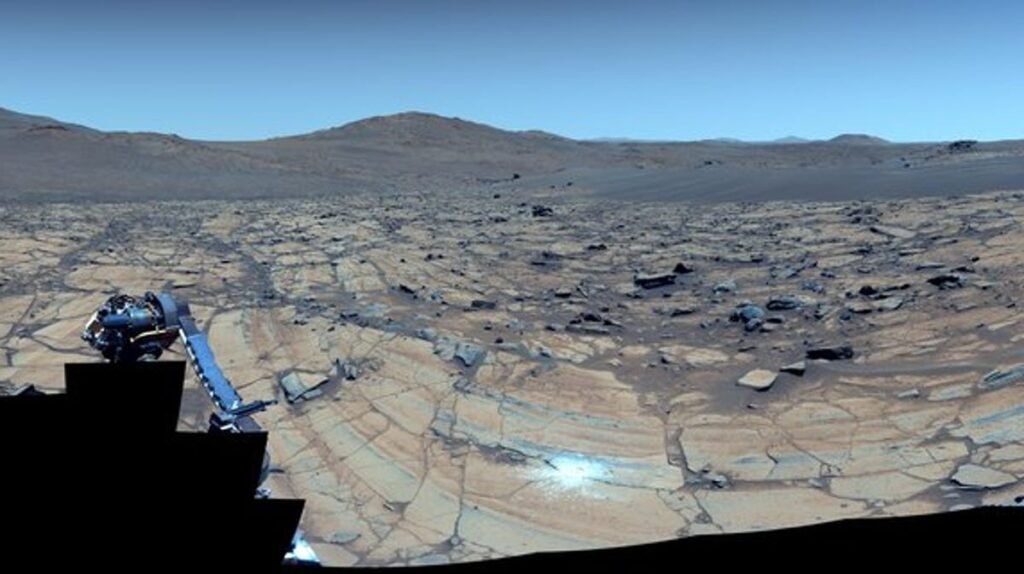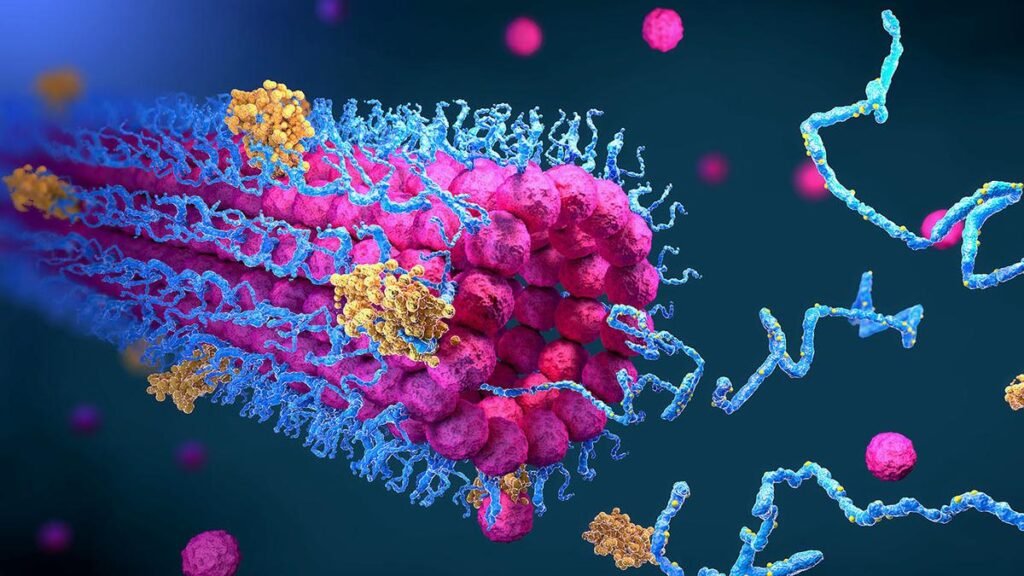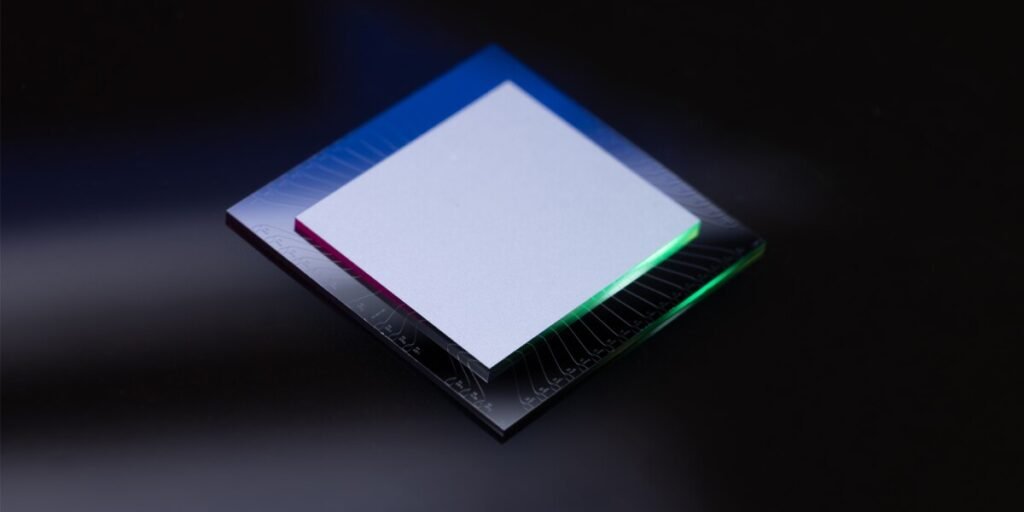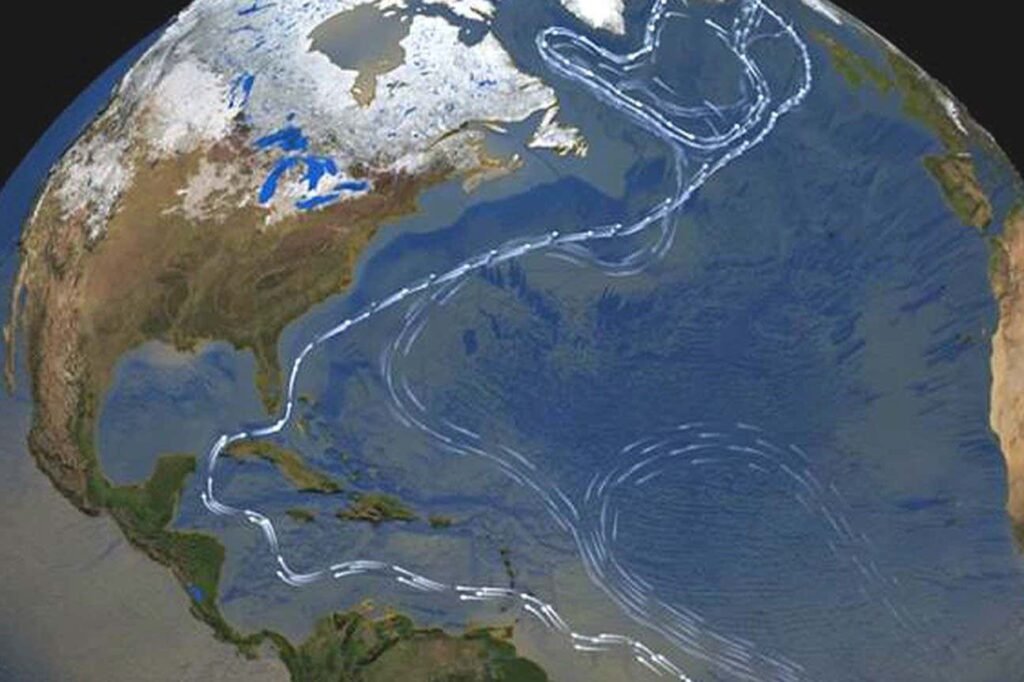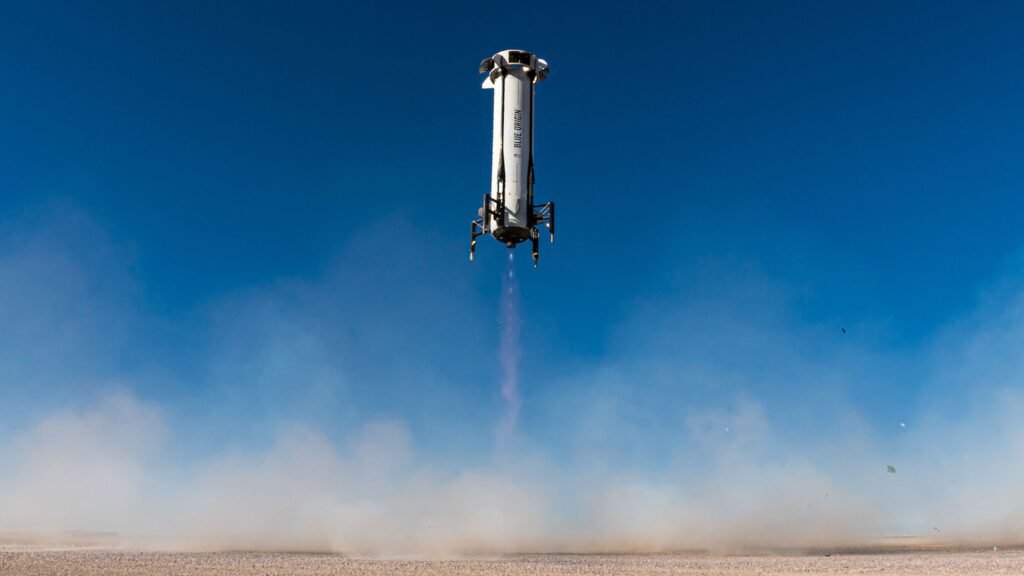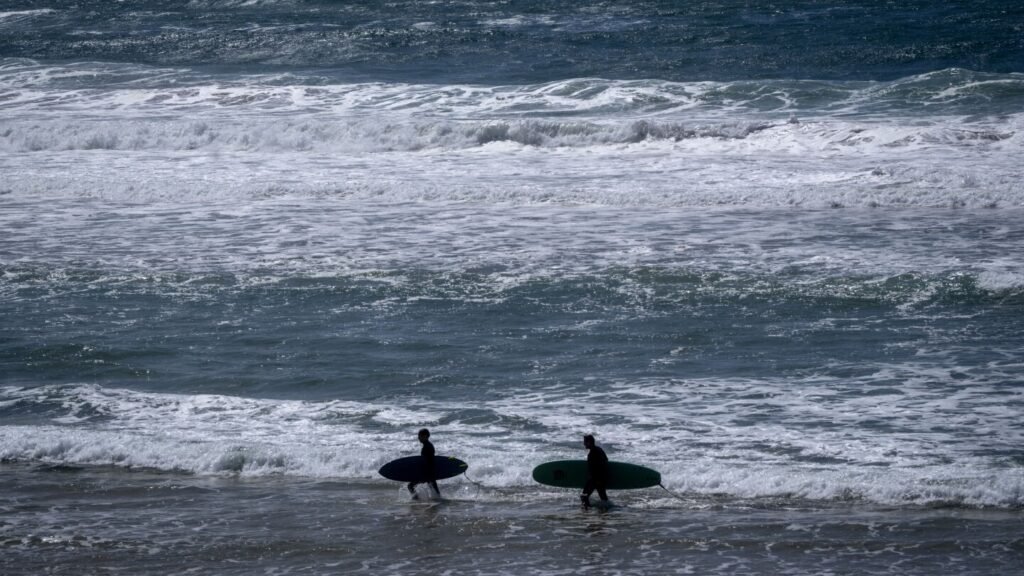Now Reading: Mars daylight skies photos show new NASA rover views
-
01
Mars daylight skies photos show new NASA rover views
Mars daylight skies photos show new NASA rover views
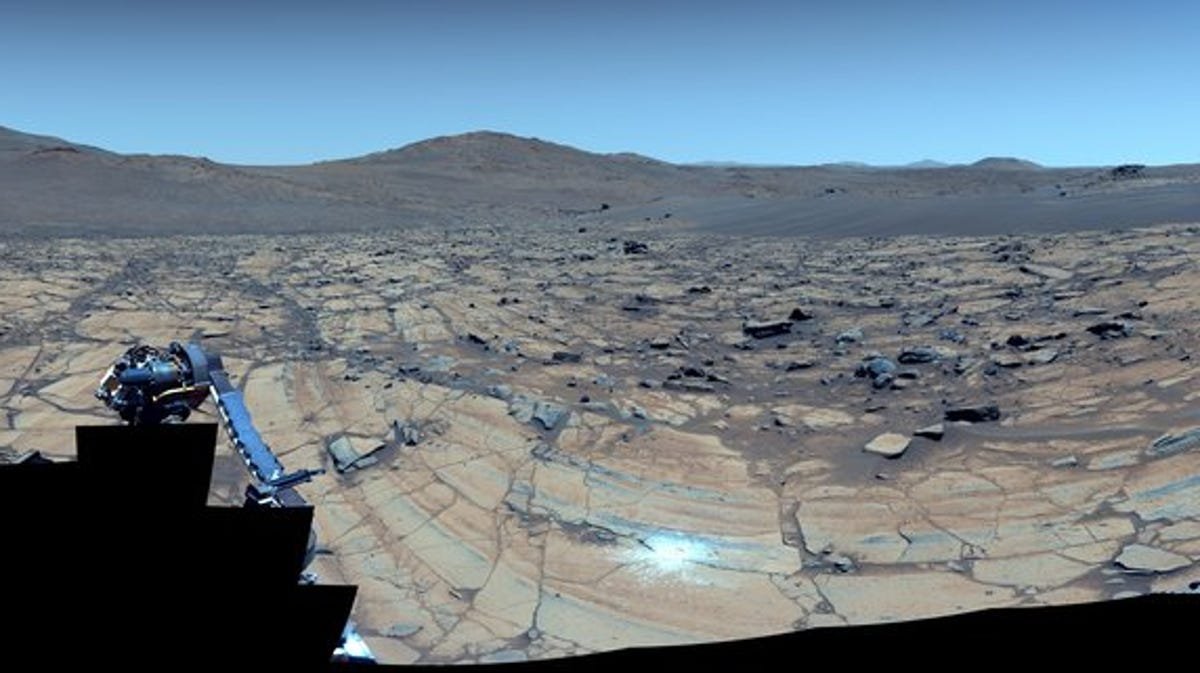

Martian dust devil caught by NASA rover
A Martian dust devil was captured rolling across the planet’s surface by NASA’s Perseverance Mars rover.
NASA/JPL-Caltech/LANL/CNES/CNRS/INTA-CSIC/Space Science Institute/ISAE-Supaero/University of Arizona
- The robotic rover in May captured what NASA described as “one of the sharpest panoramas of its mission so far.”
- NASA released the mosaic in August, which, with color-enhancing technology, unveils the Martian landscape under a sky that is “deceptively” blue.
- Perseverance has been exploring in and around a Martian feature known as the Jezero Crater since 2021.
With its reddish-hued surface and surroundings, Mars has more than earned its colorful nickname. But how would the Red Planet appear under clear-blue Earth skies?
Thanks to a NASA rover wandering the Martian iron oxide-infused surface, we now have a rough idea.
Perseverance, one of two car-sized robotic rovers managed from NASA’s Jet Propulsion Laboratory in Southern California, has spent years exploring the Mars surface for signs that the planet was once habitable. Scientists believe the geology of Mars may hold valuable clues about past ancient life, and so the robotic vehicles, controlled remotely from Earth, have slowly navigated the rocky terrain to scoop up and collect intriguing samples.
Along the way, Perseverance has made some extraordinary finds and captured some stunning vistas. The latest came earlier in May, when the rover captured what NASA described as “one of the sharpest panoramas of its mission so far.”
NASA released the mosaic in August, which, with color-enhancing technology, unveils the Martian landscape under a sky that is “deceptively” blue.
What is Perseverance? What to know about NASA rover
In July 2020, the Perseverance rover underwent a 200-day, 300-million-mile journey to reach Mars. After landing in February 2021 in the Jezero Crater, the robot, controlled remotely from Earth, spent nearly four years searching for and collecting more than two dozen rock samples – many of which are stored at the first-ever depot on another planet for future retrieval.
The bottom of the Jezero Crater – believed to have formed 3.9 billion years ago from a massive impact – is considered to be among the most promising areas on Mars to search for evidence of ancient life. Perseverance’s adventures have revealed some insights about the enigmatic Martian geology.
Then in 2024, after years in the trenches of Jezero, Perseverance in December finally summitted the steep Martian crater to begin the next leg of its journey exploring the crater’s rim.
The rocks Perseverance has spent years collecting are of high interest to NASA and the European Space Agency, which hopes to one day soon retrieve the samples and bring them back to Earth before humans themselves venture to the Red Planet.
NASA’s Curiosity rover has also been exploring the Martian surface since 2012 in the Gale Crater.
‘Enhanced-color’ photo shows Mars under Earth-like skies
The imaging team of NASA’s Perseverance Mars rover took advantage of clear skies May 26 on the Red Planet to capture the recent panoramic image from the rover’s Mastcam-Z camera. The final product, a 360-degree panorama of an area nicknamed “Falbreen,” was stitched together from 96 separate images.
One version shows Mars in all its natural rust-colored glory. The other mosaic is what NASA refers to as an “enhanced-color” version that had its color bands processed to “improve visual contrast and accentuate color differences,” NASA said in a press release.
The result? A Martian sky that more accurately resembles Earth’s.
“In this particular mosaic, we have enhanced the color contrast, which accentuates the differences in the terrain and sky,” Jim Bell, Mastcam-Z’s principal investigator at Arizona State University in Tempe, said in a statement.
Several interesting features are visible in the image, including a rock that appears to lie on top of a sand ripple and hills as distant as 40 miles away. Tracks from the rover’s journey to the location can also be seen toward the mosaic’s right edge about 300 feet away.
Martian ‘helmet’ and other recent rover discoveries
The panoramic photo is just one of several recent sights and discoveries made possible by Perseverance in 2025.
Earlier in August, NASA published a photo of a rock on the surface of Mars with a pointed peak and a flared “brim” resembling a centuries-old helmet. The image, taken Aug. 5 by the rover’s Left Mastcam-Z camera, was chosen as the photo of the week for week 234 of its mission on Mars.
Perseverance also made two incredible finds earlier in the year, the most recent of which occurred in March when the rover came across an oddly textured rock comprised of hundreds of millimeter-sized spheres.
In January, Perseverance also witnessed a relatively uncommon sight of two dust devils swirling and spinning near one another. NASA released the video and imagery of the phenomenon in April.
Contributing: James Powel, USA TODAY
Eric Lagatta is the Space Connect reporter for the USA TODAY Network. Reach him at elagatta@gannett.com


